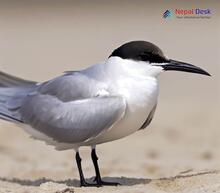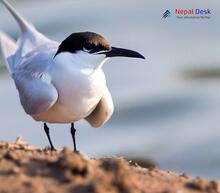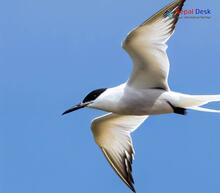The fascinating world of avian species is vast and diverse, with countless species gracing our planet's skies. One such intriguing group of birds is classified under the Gelochelidon genus. In this article, we will delve into the unique aspects of these birds by understanding their evolution tree, taxonomy, morphology, ecological characteristics, and their presence in the beautiful country of Nepal.
Tracing the Evolution Tree
The evolution tree of Gelochelidon genus serves as an essential tool for understanding their historical development and connection to other bird species. Molecular research, fossil records, and comparisons of morphological features help determine relationships between different avian groups.
Fascinatingly, genetic studies have demonstrated that the closest relative of Gelochelidon terns is not within the family Laridae but within Sternidae. This discovery highlights parallel evolutionary paths involving independent adaptations – a fantastic example of convergent evolution at work. Over time, ancestral Gelochelidon evolved distinct traits suitable for life as seabirds, which subsequently led to speciation within its genus.
Insights into Taxonomy
Taxonomy plays a pivotal role in understanding biodiversity by classifying birds based on shared characteristics. Here is an overview of the Gelochelidon genus taxonomy:
- Kingdom: Animalia
- Phylum: Chordata
- Class: Aves
- Order: Charadriiformes
- Family: Laridae
- Genus: Gelochelidon
This hierarchical system helps researchers and bird enthusiasts alike in comprehending the interrelationships among the two species - the Gull-billed Tern (Gelochelidon nilotica) and the Australian Gull-billed Tern (Gelochelidon macrotarsa) within the genus.
Morphology: Understanding the Physical Characteristics
A closer look at the Gull-billed Tern reveals distinct physical traits that set it apart. Adult birds boast a sleek profile with an overall length of approximately 33-38 cm and a wingspan that ranges from 76-85 cm. Their plumage consists of a striking blend of soft greys with a black cap adorning their heads during breeding seasons. The legs are stout and relatively short for a tern - a feature that distinguishes them from other members within the Laridae family. Another key identifier is their gull-like bill, which is thick and black - earning them their title.
Ecology: Habitat Preferences and Diet
Habitats preferred by the Gull-billed Tern include marshes, estuaries, lagoons, and coastal areas with suitable nesting sites. They have developed a wide-ranging diet to adapt to their various environments – feeding on insects, fish, small mammals, and even other birds' eggs and chicks. This adaptability enables the Gelochelidon genus to thrive in many regions across the globe.
Presence in Nepal: Distribution and Status
With its stunning landscapes and rich biodiversity, Nepal is home to an impressive array of avian species. The Gull-billed Tern can be found in different parts of the country, predominantly near large water bodies like lakes, rivers, and wetlands. They are generally observed during the migratory season as they make their journey between breeding and wintering grounds. In Nepal, their status remains relatively stable with a healthy population count.
In conclusion, the Gelochelidon genus sheds light on nature's incredible ability to adapt and diversify throughout evolutionary history. Understanding these distinctive characteristics paves the way for birdwatchers and conservationists alike to appreciate and protect these captivating creatures. As we continue to explore the enchanting world of birds, we must remember to embrace our role as stewards of the environment – ensuring that future generations can revel in the wonders of the Gelochelidon Genus and beyond.




